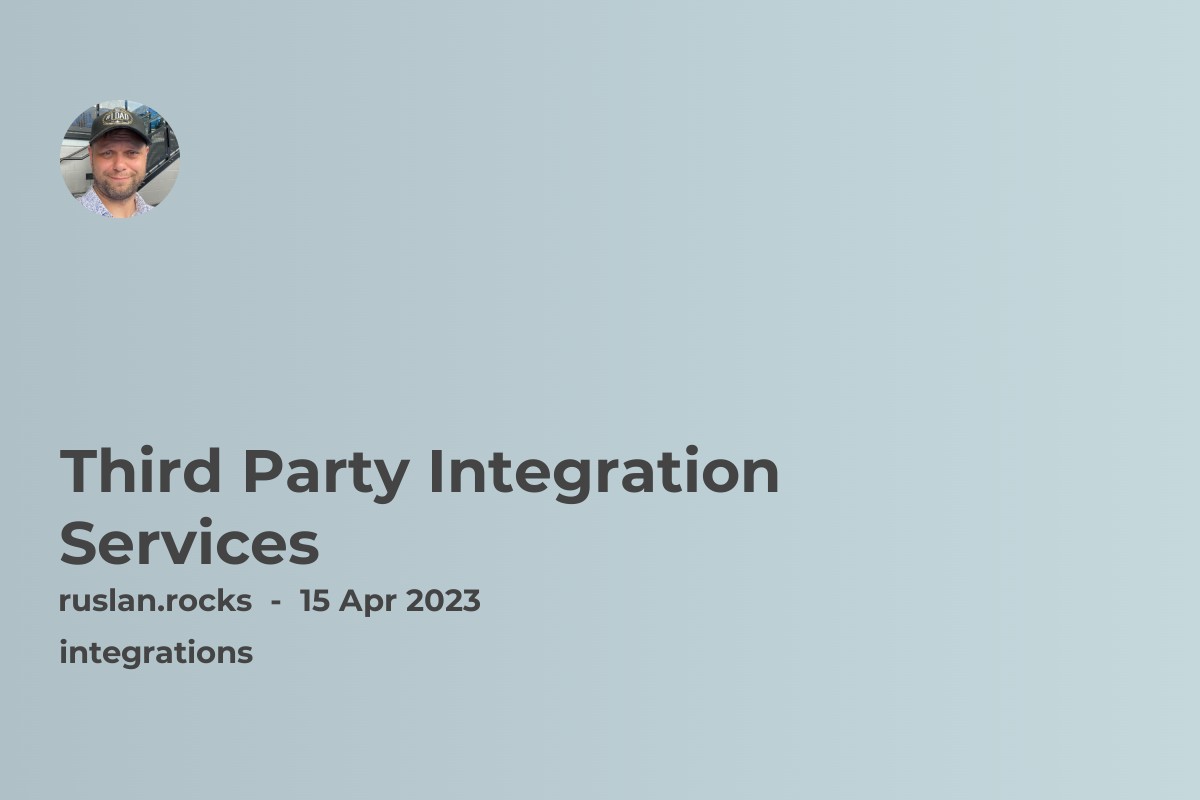
Third-party integration services can help businesses automate processes, streamline workflows, and enhance overall productivity. In this article, we'll dive into the world of third-party integrations, discussing what they are, how they work, and why they're so important.
What is Third-Party Integration?
Understanding the Basics
When we talk about integration, we're referring to the process of connecting two or more systems to work together seamlessly. Third-party integration, specifically, involves connecting a company's internal software with external software developed by a third-party provider.
How Third-Party Integrations Work
Third-party integrations work by creating an interface that allows external software to communicate with a company's internal systems. Most integrations use APIs (Application Programming Interfaces) to facilitate this communication. APIs are sets of protocols, routines, and tools for building software and applications.
Why Third-Party Integrations Matter
Third-party integrations allow businesses to extend the functionality of their software, which can improve workflows, increase productivity, and enhance customer experiences. Rather than reinventing the wheel, businesses can leverage established third-party solutions that have been tested and refined over time.
The Definition of API Integration Services
API integration services provide the tools and infrastructure necessary to connect different software applications, allowing them to communicate and share data. A third-party API integration service, therefore, is a solution provided by an external software vendor that enables a company to connect its internal software with a third-party solution.
What Are the Benefits of Third-Party API Integration Services?
Third-party API integration services offer several benefits to businesses, including:
-
Cost savings: Rather than investing in expensive development and testing, businesses can leverage pre-built APIs from third-party providers.
-
Reduced time to market: Integrations can be completed much more quickly when using pre-built APIs, which can give businesses a significant advantage in fast-paced industries.
-
Improved functionality: Third-party solutions often provide more robust features and functionality than businesses could develop on their own.
How to Choose the Right Third-Party API Integration Service
Choosing the right third-party API integration service is critical to achieving successful integration. Businesses should consider factors such as:
-
Functionality: Does the API provide the features and functionality needed?
-
Support: Is there adequate support provided by the vendor?
-
Security: Does the API meet the business's security requirements?
-
Pricing: Is the pricing structure reasonable and scalable?
How Does the Integration Process Work?
Understanding the Web App Development Process
The web app development process typically involves several stages, including:
-
Discovery: Analyzing business needs and requirements.
-
Design: Creating wireframes and mockups of the application.
-
Development: Building the application using programming languages and frameworks.
-
Testing: Conduct extensive testing to ensure the application operates as expected.
-
Deployment: Installing the application on servers and making it available to users.
-
Maintenance: Providing ongoing support and updates to ensure the application remains functional.
How Does Third-Party Integration Fit into the Development Process?
When integrating with third-party software, the integration process fits primarily into the development and testing phases. Developers must ensure that the API can communicate correctly with the internal software and perform rigorous testing to prevent data errors, security breaches, or system crashes.
What Are the Best Practices for Successful Third-Party Integrations?
To ensure a successful third-party integration, businesses should follow some best practices, such as:
-
Do thorough research on potential API providers before committing to one.
-
Prioritize security and ensure that sensitive data is protected.
-
Allow for flexibility in the integration process in case changes are needed.
-
Have a plan for monitoring and maintaining the integration after it's been deployed.
Sources
Mobiindustry - The article that can show you everything you need to know about third-party application.
Indeed - To know what many third-party integrations can make changes to your life.
Altamira - A reliable web to know about integration of third-party apis.

